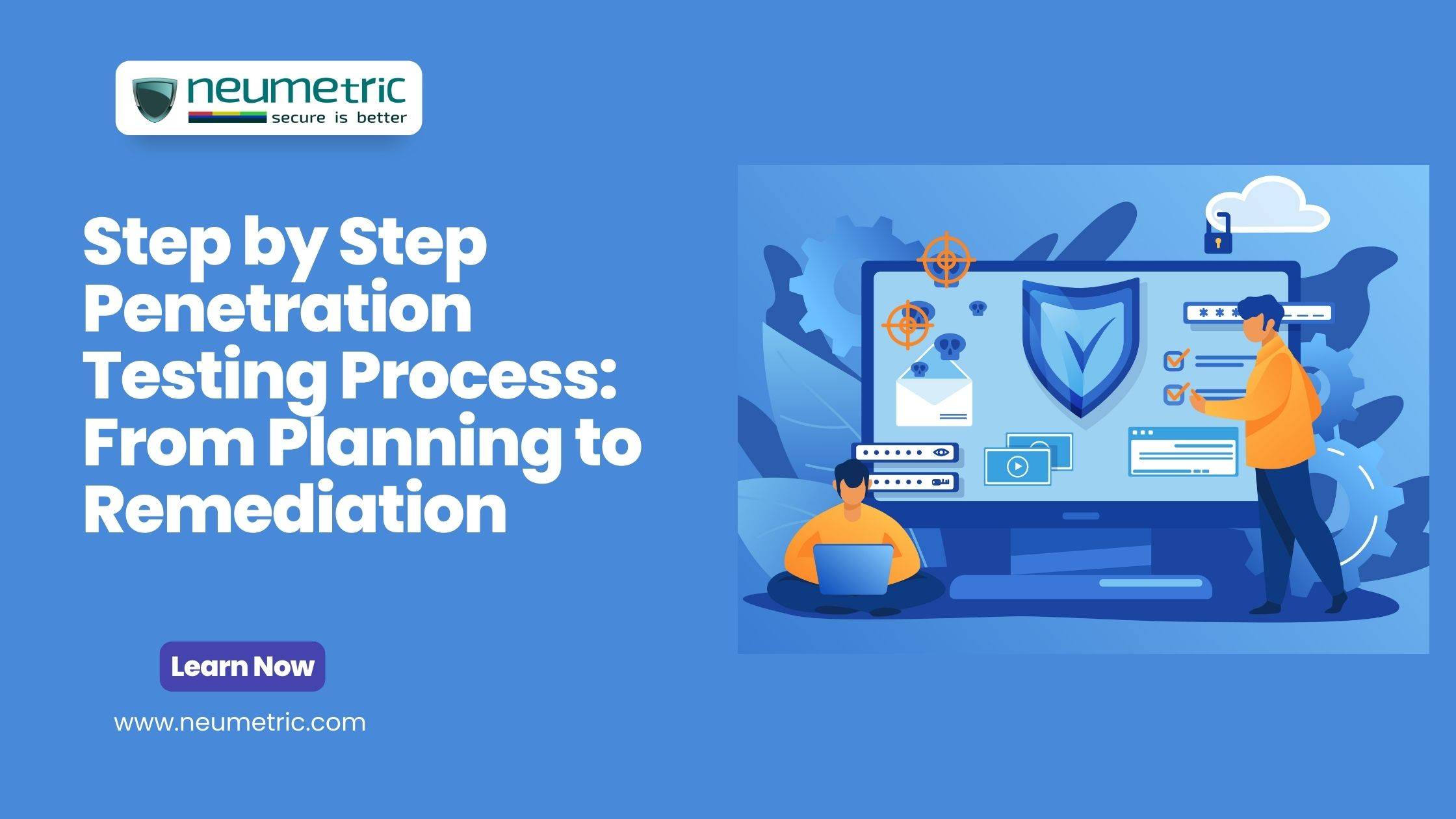Table of Contents
ToggleIntroduction
In today’s ever-evolving digital landscape, cybersecurity is more critical than ever. Businesses & organizations need to be proactive in safeguarding their systems & data from potential threats. Penetration testing, or pen testing for short, is a powerful tool in this arsenal. It involves simulating cyberattacks to identify vulnerabilities in systems & networks before malicious actors can exploit them.
In this article, we’ll walk you through the step-by-step penetration testing process, from the initial planning stage to the final remediation & reporting. By understanding this systematic approach, you’ll be better equipped to ensure the security & resilience of your digital infrastructure.
Pre-Engagement Phase
Before you dive into penetration testing, it’s essential to define your objectives & scope. This phase sets the foundation for the entire process.
Define Objectives & Scope: Start by identifying the target systems & defining your goals & objectives. What do you want to achieve through the testing? Are there specific vulnerabilities or compliance standards you need to address?
Legal & Ethical Considerations: Compliance with regulations is a must. Ensure you have proper authorization to conduct the test. Failing to do so can have legal & ethical consequences.
Planning & Preparation
The planning & preparation phase is where you assemble your team, gather information, & set up the necessary tools & resources.
Assembling the Penetration Testing Team: Put together a team of skilled professionals with the right expertise. Roles & responsibilities must be well-defined.
Information Gathering: During the reconnaissance phase, gather essential information about the target. Open source intelligence (OSINT) & other techniques help create a comprehensive picture of the system.
Tools & Resources: Carefully select the penetration testing tools & set up a controlled testing environment. This environment will mimic the real system, allowing you to safely perform tests without causing harm.
Scanning & Enumeration
With the groundwork laid, it’s time to move into scanning & enumeration, where you identify potential vulnerabilities.
Network Scanning: Begin by scanning the network to identify open ports & services. This reveals the attack surface & potential entry points.
Host Enumeration: Dive deeper into the host systems. Active Directory enumeration & user account enumeration are common tactics to gather critical information.
Vulnerability Analysis
Once potential vulnerabilities are identified, it’s time to assess the risk associated with each one.
Identifying Vulnerabilities: Identify common vulnerabilities & custom weaknesses that could be exploited by malicious actors.
Risk Assessment: Prioritize vulnerabilities based on their impact & likelihood. This step ensures that the most critical issues are addressed first.
Exploitation
Exploitation is where the rubber meets the road. It involves attempting to exploit vulnerabilities to gain unauthorized access.
Attempting to Exploit Vulnerabilities: Employ proof of concept exploits to test vulnerabilities. This may involve trying to gain access to sensitive systems.
Gaining a Foothold: If initial exploits are successful, focus on privilege escalation & maintaining persistence within the system.
Post-Exploitation Phase
After successfully gaining access, you move into the post-exploitation phase, which involves data collection, exfiltration, & reporting.
Data Collection & Exfiltration: Gather sensitive data while ensuring data integrity. This phase may uncover critical information about the system’s weaknesses.
Reporting: Document your findings comprehensively & report them to stakeholders. Clear & concise reporting is essential for understanding the security landscape.
Remediation & Mitigation
With vulnerabilities exposed, it’s time to recommend & implement fixes.
Recommendations for Vulnerability Remediation: Provide detailed guidance on how to address vulnerabilities, working closely with system owners.
Verification & Validation: Confirm vulnerability resolution & re-test to ensure the security of the system.
Post-Testing Cleanup
After completing the testing & addressing vulnerabilities, it’s crucial to clean up any traces left behind.
Removing Any Traces of Testing: Ensure that all testing artifacts are removed, so the system is returned to its original state.
Documentation & Final Reporting
The documentation & final reporting phase is where you compile your findings & share them with stakeholders.
Compiling the Penetration Testing Report: Create a comprehensive report that includes an executive summary & technical findings. This report helps stakeholders understand the test results.
Conclusion
In conclusion, a step-by-step penetration testing process is essential for identifying vulnerabilities, strengthening cybersecurity, & mitigating potential threats. By following a structured approach, you can proactively protect your systems & data.
FAQs:
What are the key legal & ethical considerations in penetration testing?
In the Pre-Engagement Phase, we emphasized the importance of legal & ethical aspects. To answer this question, it’s crucial to understand that compliance with regulations is a must. Always ensure that you have proper authorization to conduct the test, as failing to do so can have serious legal & ethical consequences.
How do you prioritize vulnerabilities in the Vulnerability Analysis phase?
In the Vulnerability Analysis phase, we discussed the need to prioritize vulnerabilities based on their impact & likelihood. When it comes to prioritization, it’s essential to focus on vulnerabilities that could potentially cause the most harm to your systems or data. This ensures that you address the most critical issues first.
What happens if the penetration testing uncovers sensitive data during the Post-Exploitation Phase?
During the Post-Exploitation Phase, it’s possible to come across sensitive data. If this occurs, the first step is to ensure data integrity. It’s vital not to compromise or misuse any discovered information. The data should be handled with care & reported appropriately to stakeholders, as it may reveal vulnerabilities that need to be addressed.




